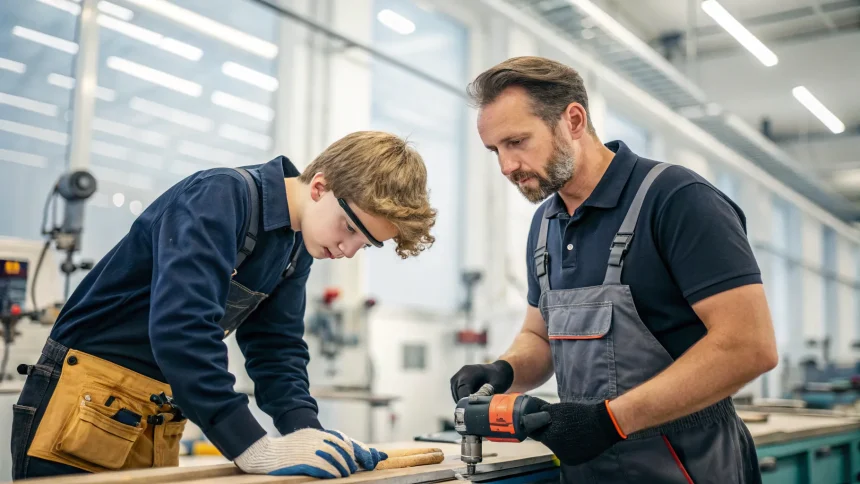A broadcast from Lincoln Technical Institute put a national spotlight on a question with real economic stakes: who will fill America’s trade jobs in the years ahead. FOX Business correspondent Lauren Simonetti reported from the school on The Claman Countdown, highlighting a training hub at a time when employers say they cannot find enough skilled workers.
The segment arrives as construction, manufacturing, auto service, and energy contractors report open positions across the country. The setting—an established career and technical school—offered a look at how students learn, and how fast industry needs them.
Why trade jobs are back in focus
For decades, many high school graduates were pushed toward four-year colleges. Rising tuition and student debt changed that calculus for some families. At the same time, public spending on infrastructure, semiconductor plants, and energy projects has increased demand for electricians, welders, HVAC technicians, and automotive specialists.
Employers say hiring is harder as older workers retire. Unions and companies have expanded apprenticeships to train new entrants while they earn. Schools that specialize in hands-on education are trying to shorten the time between classroom learning and steady work.
“FOX Business correspondent Lauren Simonetti reports from the Lincoln Technical Institute to discuss the future of trade jobs in the U.S. on ‘The Claman Countdown.’”
Training up: classrooms that look like job sites
Institutions like Lincoln Tech build labs that mirror modern workplaces. Students practice on vehicles, refrigeration systems, CNC machines, and electrical panels. Instructors stress safety, diagnostics, and the soft skills needed to work with customers and teams.
Partnerships with local employers can turn labs into talent pipelines. Companies donate equipment, advise on course updates, and pre-hire students who meet skill benchmarks. Many programs offer certifications aligned with industry standards to speed entry-level placement.
Graduates often start in entry roles and progress quickly with on-the-job training. For employers, a steady flow of job-ready candidates can reduce overtime, cut project delays, and improve service quality.
Pay, mobility, and the stigma problem
Pay in the skilled trades varies by specialty and region, but many occupations offer steady wages with overtime opportunities. Total compensation can rise with licenses, night shifts, or hazardous duty work. Some trades provide portable credentials, letting workers move for projects with better pay.
Advocates say an old stigma still pushes students away from technical careers. They argue that modern shops use advanced diagnostics, precision tools, and digital systems. Reframing these jobs as tech-heavy, stable, and entrepreneurial could widen the pipeline.
What schools and employers can do now
- Expand paid apprenticeships that stack into recognized certificates.
- Update labs to match current equipment and standards.
- Create credit pathways from certificates to associate and bachelor’s degrees.
- Strengthen high school outreach with employer-backed summer programs.
- Offer support such as tools stipends and transportation assistance.
Signals to watch
Three shifts could shape the next few years. First, the rollout of federally funded projects may keep demand elevated for electricians, heavy equipment operators, and welders. Second, the rise of electric vehicles and advanced driver-assistance systems will increase need for technicians trained on high-voltage and sensor systems. Third, heating and cooling upgrades, including heat pumps and building automation, will call for HVAC specialists with electrical know-how.
Policy moves also matter. Funding for workforce development, high school career and technical education, and regional training centers could influence how quickly schools scale up. Employers will watch retention rates for apprentices and the time it takes new hires to reach productivity targets.
Viewers heard a simple point from the on-the-ground report: schools and employers must align faster to meet demand. If they do, students may find quicker entry to stable work, and businesses may deliver projects on time.
The takeaway is clear. America’s skilled trades need a larger pipeline and better coordination between classrooms and job sites. Watch for more partnerships, more paid training, and more programs that help students earn while they learn. The next test will be whether these steps close hiring gaps before retirements and new projects widen them.







